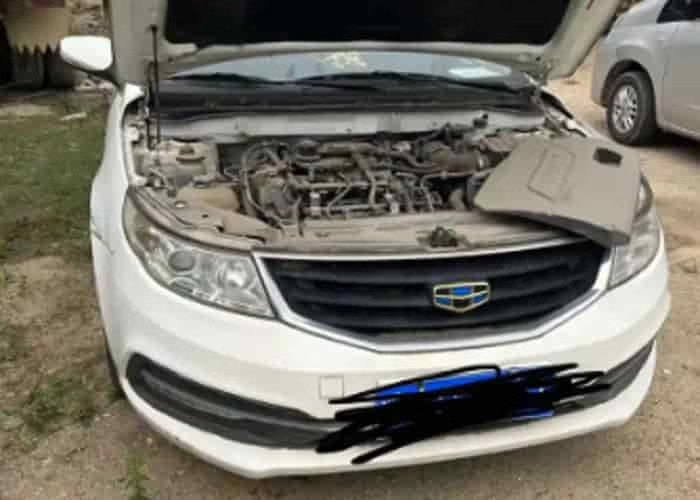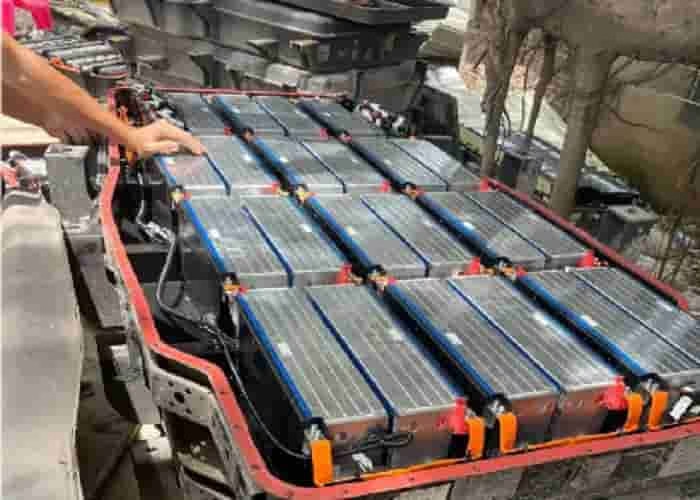Talking about the impact of the technological change of power electrification on the market and industry, Ouyang Minggao summarized it into four “big changes”. The shift of automobile technology from the development period of electrification to the outbreak period has led to a major structural change in the market. The systemic change of automobile products from lean production of durable parts to high-frequency iteration of fashion products, the epochal change of automobiles from the traditional model to the self-media information explosion model, and the cyclical change of the automobile market from the previous incremental market to the stock market. New energy and fuel vehicles have formed a zero-sum game of close combat, and the market structure has undergone a subversive change in 3-5 years.
The artificial intelligence revolution has triggered the outbreak of full-domain intelligence of new energy vehicles
How to look at the model competition of the automobile industry from the great changes in vehicle intelligent technology from 2025 to 2030? Ouyang Minggao said that first of all, the technology has accumulated a lot of experience. Highway NOA has gone from being usable to being easy to use, and urban NOA will be promoted on a large scale soon. This is the logic of technology. The logic of the market is that DeepSeek has brought a huge impact on the minds of the whole people, and the public’s enthusiasm for intelligent driving will naturally rise. In terms of policy logic, the country is now vigorously advocating the development of artificial intelligence, and the three logical time points also overlap, so the intelligence of the whole vehicle will begin to explode this year.
Regarding the current hot intelligent driving, Ouyang Minggao analyzed that the current national intelligent driving is mainly L2+ intelligent navigation assisted driving (NOA), highway NOA has gone from being usable to being easy to use, and urban NOA has become practical. Multimodal large models as the base model of end-to-end algorithms can enable high-level autonomous driving technology, but the safety and reliability issues of large models must also be solved. L3 autonomous driving requires relevant departments to issue relevant laws and regulations as soon as possible, and L4 highly autonomous driving needs to accumulate experience and proceed step by step, striving to achieve large-scale mass production in 2030. It is not appropriate to mention national autonomous driving for the time being.
In his view, the “artificial intelligence +” revolution may be greater than the changes brought about by the first industrial revolution. Specifically in the automotive field, the artificial intelligence revolution has triggered an explosion of full-domain intelligence in new energy vehicles: smart cockpits, smart chassis, smart driving, smart batteries; product research and development, manufacturing, sales, use, maintenance, and recycling throughout the entire life cycle.
“Intelligent technology changes will have a huge impact on the market and industry.” Ouyang Minggao said that the model creates value and the ecology wins the future. The current stage of industrial development is characterized by the influx of new car-making forces, which is about to pass. Competition in the stage of intelligent transformation will be more intense, so we must be prepared to enter the turning point of industrial model transformation and the preparatory stage of mergers and reorganizations. The so-called industrial model transformation is from corporate competition to model competition.
The new energy vehicle revolution promotes the all-round revolution of new energy
So, how to look at the future industrial pattern from the great technological transformation of low-carbon energy that will take place from 2030 to 2035? Ouyang Minggao said that with the deepening of the technological transformation of power electrification and vehicle intelligence, will the smart electric vehicle industry develop towards the intelligent industry or integrate into the new energy industry system? This is a strategic choice. Without low-carbon energy, only vehicle intelligence, the final outcome of development is the shrinkage of the automobile industry. Without low-carbon energy, it is not a real new energy vehicle.
It is worth noting that the new generation of power all-solid-state batteries will be industrialized. From a strategic perspective, the current focus is to guard against the subversive risks brought about by the all-solid-state battery technology route. Ouyang Minggao believes that 2024 should be a milestone year for China’s all-solid-state batteries. At present, most of the major domestic automotive battery companies have begun to focus on the all-solid-state battery technology route with sulfide as the main electrolyte, and choose a material system consisting of a high-nickel ternary positive electrode, a sulfide-based composite electrolyte, and a silicon-carbon negative electrode, with the goal of achieving a specific energy of about 400Wh/kg for automotive batteries, surpassing traditional liquid and solid-liquid hybrid batteries. At the same time, the safety of high-nickel ternary batteries will be improved to the level of lithium iron phosphate batteries through all-solid-state batteries. The start time of industrialization is 2027-2028, and it is completely possible to mass produce around 2030. For 500Wh/kg automotive all-solid-state batteries, it is necessary to break through lithium negative electrode technology, which may require the use of artificial intelligence-based material research and development platforms to empower. The estimated time for industrialization is about 2030-2035.
“In 2030, the low-carbonization technology of new energy vehicles will explode.” Ouyang Minggao explained that, first of all, perovskite photovoltaic thin-film batteries are triggering a new round of technological changes in solar cells, and it is expected to be industrialized around 2030. Perovskite photovoltaic thin-film batteries can be made into semi-transparent batteries, flexible batteries, and high-efficiency laminated batteries. The comprehensive use can cover the entire car body. The on-board power generation area is 4-5 times higher than that of existing crystalline silicon batteries, and the power generation power is increased to 1-1.5 kilowatts. The annual body power generation provides a driving mileage of about 10,000 kilometers.
Secondly, the interaction between the car and the network has triggered a change in on-board energy storage technology. From the perspective of grid charging, vehicle-grid interaction has become a key path for the existing urban distribution network to solve the charging capacity problem under the increasing proportion of wind power and photovoltaic power. The sharp increase in the number of electric vehicles will inevitably force the charging behavior to change from disordered charging to orderly charging and then to two-way charging vehicle-grid interaction; from the perspective of household energy storage, electric vehicle battery energy storage is the best household energy storage method under the conditions of high-rise small-sized residential buildings in China. The 2025 government work report proposes to cultivate new growth points such as green buildings, green energy, and green transportation. The house-car-grid system is the best combination point; from the perspective of electric vehicles, vehicle-grid interaction will make electric vehicle charging free and even a tool for making money. The National Development and Reform Commission, the National Energy Administration, the Ministry of Industry and Information Technology, and the State Administration for Market Regulation will officially launch the national city-level vehicle-grid interaction demonstration project in 9 cities across the country including Shanghai this year.
Finally, the integration of transportation and energy will trigger a technological change in the energy infrastructure for vehicles. The development of photovoltaic corridors on highways is promoting the construction of a comprehensive energy supply system of light-storage-hydrogen-charging-exchange-discharging to meet the needs of heavy truck battery/hydrogen bottle replacement and megawatt-level flash charging for cars. Zero-carbon transportation service areas will gradually become popular, from intelligent car-road-cloud development to intelligent and low-carbon car-energy-road-cloud integration.
Ouyang Minggao said that the new energy vehicle revolution promotes the all-round revolution of new energy, and new energy vehicles are also a branch of the new energy industry system. In 2024, the installed capacity of wind power and photovoltaic power will exceed 370 million kilowatts, and the cumulative installed capacity will reach 1.44 billion kilowatts in 2024. Based on this development, the total installed capacity of wind power and photovoltaic power will exceed 3 billion kilowatts in 2030, and the conservative estimate of wind power and photovoltaic power generation will exceed 4 trillion kilowatt-hours, accounting for 30%-35% of my country’s total electricity consumption in 2030. The total power generation of non-fossil energy (including hydropower, nuclear power, etc.) will reach 50%-60% of the power generation. From this, he inferred that 2030 may be the year when China’s new energy revolution will break out. With the dual historical opportunities of the productivity revolution of new energy technologies such as new energy vehicles, lithium-ion batteries, hydrogen fuel cells, and perovskite photovoltaic cells, and the production relations revolution of electricity market reform, five trillion-level industries will be born in the next ten to thirty years.
















Leave a Reply